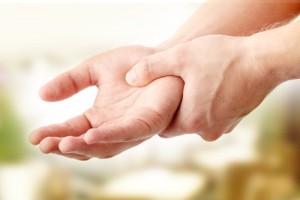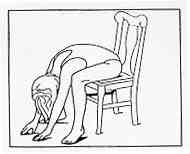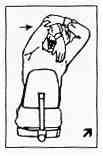
Categories
- Advanced Guitar (7)
- Beginner Guitar (22)
- Contest (7)
- Course Walk Through (8)
- Fingerstyle (3)
- Gear (5)
- Gibson (9)
- Gibson's Learn & Master Guitar (74)
- Guest (5)
- Guitar Gathering (8)
- Guitar Tips (34)
- Guitar Video (22)
- Guitarists (9)
- In-Studio (1)
- Intermediate Guitar (17)
- Maintenance (3)
- Mobile App (4)
- Monthly Video Tip (21)
- Playing Technique (5)
- Sale (4)
- Student Profile (22)
- Student Support Forum (17)
Archives
- January 2026(1)
- December 2025(1)
- November 2025(1)
- October 2025(1)
- September 2025(1)
- August 2025(1)
- July 2025(1)
- June 2025(1)
- May 2025(1)
- April 2025(1)
- March 2025(1)
- February 2025(1)
- January 2025(1)
- December 2024(1)
- November 2024(1)
- October 2024(1)
- September 2024(1)
- August 2024(1)
- July 2024(1)
- June 2024(1)
- May 2024(1)
- April 2024(1)
- March 2024(1)
- February 2024(1)
- January 2024(1)
- December 2023(1)
- November 2023(1)
- October 2023(1)
- September 2023(1)
- August 2023(1)
- July 2023(1)
- June 2023(1)
- May 2023(1)
- April 2023(1)
- March 2023(1)
- February 2023(1)
- January 2023(1)
- December 2022(1)
- November 2022(1)
- October 2022(1)
- September 2022(1)
- August 2022(1)
- July 2022(1)
- June 2022(1)
- May 2022(1)
- April 2022(1)
- March 2022(1)
- February 2022(1)
- January 2022(1)
- December 2021(1)
- November 2021(1)
- October 2021(1)
- September 2021(1)
- August 2021(1)
- July 2021(1)
- June 2021(1)
- May 2021(1)
- April 2021(1)
- March 2021(1)
- February 2021(1)
- January 2021(1)
- December 2020(1)
- November 2020(1)
- October 2020(1)
- September 2020(1)
- August 2020(1)
- July 2020(1)
- June 2020(1)
- May 2020(1)
- April 2020(1)
- March 2020(1)
- February 2020(1)
- January 2020(1)
- December 2019(1)
- November 2019(1)
- October 2019(1)
- September 2019(1)
- August 2019(1)
- July 2019(1)
- June 2019(1)
- May 2019(1)
- April 2019(1)
- March 2019(1)
- February 2019(1)
- January 2019(1)
- December 2018(1)
- November 2018(1)
- October 2018(1)
- September 2018(1)
- August 2018(1)
- July 2018(1)
- June 2018(1)
- May 2018(1)
- April 2018(1)
- March 2018(1)
- February 2018(1)
- January 2018(1)
- December 2017(1)
- November 2017(1)
- October 2017(1)
- September 2017(1)
- August 2017(1)
- July 2017(1)
- June 2017(1)
- May 2017(1)
- April 2017(1)
- March 2017(1)
- February 2017(1)
- January 2017(1)
- December 2016(1)
- November 2016(1)
- October 2016(1)
- September 2016(1)
- August 2016(1)
- July 2016(1)
- June 2016(1)
- May 2016(1)
- April 2016(1)
- March 2016(1)
- February 2016(1)
- January 2016(1)
- December 2015(1)
- November 2015(1)
- October 2015(1)
- September 2015(1)
- August 2015(1)
- July 2015(1)
- June 2015(1)
- May 2015(1)
- April 2015(1)
- March 2015(1)
- February 2015(1)
- January 2015(1)
- December 2014(1)
- November 2014(1)
- October 2014(1)
- September 2014(1)
- August 2014(1)
- July 2014(1)
- June 2014(1)
- May 2014(1)
- April 2014(1)
- March 2014(1)
- February 2014(1)
- January 2014(1)
- December 2013(1)
- November 2013(1)
- October 2013(1)
- September 2013(1)
- August 2013(1)
- July 2013(1)
- June 2013(1)
- May 2013(1)
- April 2013(1)
- March 2013(1)
- February 2013(1)
- January 2013(1)
- December 2012(1)
- November 2012(1)
- October 2012(1)
- September 2012(1)
- August 2012(1)
- July 2012(1)
- June 2012(1)
- May 2012(1)
- April 2012(1)
- March 2012(1)
- February 2012(1)
- January 2012(1)
- December 2011(1)
- November 2011(1)
- October 2011(1)
- September 2011(1)
- August 2011(1)
- July 2011(1)
- June 2011(1)
- May 2011(1)
- April 2011(1)
- March 2011(1)
- February 2011(1)
- January 2011(1)
- December 2010(1)
- November 2010(1)
- October 2010(1)
- September 2010(1)
- August 2010(1)
- July 2010(1)
- June 2010(1)
- May 2010(1)
- April 2010(1)
- March 2010(1)
- February 2010(1)
- January 2010(1)
Warm-up Before Playing Guitar to Avoid Pain
Wednesday, December 29, 2010Guitar Playing Can Be a Pain in the... Hand!

Beginning guitarists have their share of obstacles to their growth. There's the raw fact that at first, the sounds they make never sounds as good as what they heard on the radio. There's the sudden demand for time that this new
toy makes upon them. (This is a bittersweet demand, of course... it hurts so good.)
But one of the most certain obstacles is the plain old hand pain that comes from exercising muscles that have been relatively undisturbed until now. (It's all fun and games until somebody buys a guitar and starts trying to hold down the right strings so they don't buzz.)
NOT JUST YOUR HANDS
If you've sat with your guitar for any extended time, you might also have noticed that your back hurts (and your shoulders, and your deltoids, and maybe your hips...). This is somewhat unavoidable since we usually sit asymmetrically in our seat, twisting to see music or lesson videos, or whatnot. This, along with the fact that we wrap ourselves forward over our guitar to see the fretboard (at least at first), creates muscle stresses and imbalances that twist us and our vertebrae in painful ways.
Guitar posture can be helped by warming up and stretching before you take your guitar on your lap. And I mean full-body warm-ups, not just hand stretches, which we'll get to in a moment.
Here is a quick sketch of my most helpful "guitar player stretches":

1) Upper/lower back--Sit in your seat, and slowly fold yourself forward between your knees until your knuckles curl onto the floor. Just hold yourself there for about 20 seconds. In case you didn't know it, most stretches don't really "take" until they're held for at least 20 seconds. (see upper right image)
2) Shoulders--First, just stretch your hands as high as they'll go and hold them for 20 secs. if you can. Next, do a repeat, but gently reach over with one hand to the opposite elbow and pull it toward
 the back side of your head. Let the forearm of the arm you're grabbing just relax down behind your head while you're tugging. Hold for about 20 secs. then switch arms. (see lower right image)
the back side of your head. Let the forearm of the arm you're grabbing just relax down behind your head while you're tugging. Hold for about 20 secs. then switch arms. (see lower right image)3) Wrists--First put your right fingertips into your left palm and let your left hand gently tug them back toward your shoulder. Hold for a few seconds, then place your left palm on the back of your right hand and VERY gently push your right hand downward, bending at the wrist in the opposite direction as just before. Hold for a few seconds, then repeat this with the opposite hand/wrist.
4) Fingers--Put your fingertips against their counterparts on the opposite hand in front of you like an evil scientist who is about to monologue about taking over the world. Skip the monologue and just do some gentle "finger pushups" with both hands pushing against one another. Now close a tight fist and open again repeating 4 or 5 times.
You should be fairly limbered up for a good rehearsal now.
As you begin to play, start slowly and simply. Save the speedier, more demanding exercises until your fingers are re-oriented to the frets and strings.
BREAKS
It may feel like you're "busting your groove" to do so, but it's a great idea to take a 2 minute standing break after every 20 mins. or so of playing/exercising.
I suggest gently shaking your hands and arms during the breaks. If you're practicing while reading music, it's also a good idea to place the heal of your palms against your eyes and gently press for a few seconds, then look at different distances around the room just before returning to your sessions.
It's not a bad idea to take a longer break after 45 mins. if you're going to be practicing/playing for more than an hour. You may even find it good to repeat some of your stretches during this break. Walk around. You'll need it.
RELAX WHILE PLAYING
One of the most difficult habits to form is sitting "relaxed" while you practice or play. It's just such an after-thought... most of us are thinking, "can we just play already?"
But training yourself to get your body aligned and relaxed EVERY time you play is going to be a well-rewarded habit! You'll be able to last longer and enjoy playing more. First, let's learn how to sit!
Choose a chair that fits well, and allows you to put your feet on the floor without pressure behind the knees. Align yourself so both seat bones are equally positioned under you (not favoring one "cheek" or the other). Then allow your shoulders to "feel heavier" and press downward only slightly and let your head sit a little taller than your normal slouch.
Now for the guitar. You will find it difficult not to twist slightly at the torso when you start to position your guitar. The left knee is the best place to rest the guitar and so many guitarists arrange some sort of stool or prop for that leg to get the guitar in the proper positon for playing while still at rest on the thigh. Footstools (maybe even the specialized "guitar footstools") can do the trick, especially for practice.
Bring the guitar close to the body (especially the left hand) and you'll keep your center of gravity inside your body, preventing excess shoulder and back strain.
WHILE PLAYING
It's probably no surprise that most of the tension you'll experience builds up while you're practicing or playing. This is because your mind is on playing, not maintaining good posture and relaxed form.
So the best advice I can give is to just make a conscious effort to monitor your level of stress and strain and make mid-session adjustments. Let go of the neck from time to time and shake out your left hand. Press your shoulders downward into your chest from time to time to pull the tension out of your neck and shoulders. Lengthen the spine and re-align your seating position whenever it comes to mind... and make it come to mind often.
It's just a matter of building habits and that will take a while if you're just starting out. And as in anything... don't forget to breathe! All the tension tends to flow to the hands because that's the most active part of you when you play guitar.
Guitar playing shouldn't be a pain in the hands or any other part of you.
 Support Forum
Support Forum